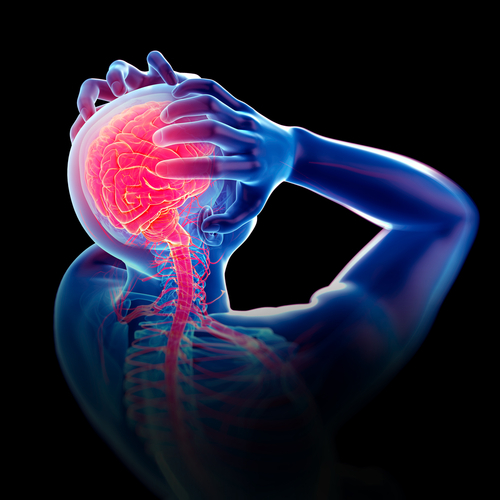The International Classification of Headache Disorders-3 Beta
M3 India Newsdesk Sep 26, 2017
For effective management of headache disorders, diagnosis is a crucial first step.Separating secondary causes from primary headache disorders is the next determining step.

Headache disorders may be frustrating for a physician to diagnose. The pattern of headache, its frequency, and the associated symptoms may overlap with other disorders. This classification would help the physician to diagnose the headache disorders or their underlying causes. A timely diagnosis implies prompt treatment and appropriate referrals.After two very successful editions of the International Classification of Headache Disorders (ICHD).The International Headache Society's Subcommittee on Classification began work on the 3rd edition in 2010, and has just published it online in Cephalalgia in 2013.
The International Classification of Headache Disorders (ICHD)-3 beta is currently considered as the gold standard for classification of migraine and other headaches.Here we present an overview of the important diagnostic features of the primary and secondary headaches as given in ICHD-3 Beta.
|
Primary Headaches |
Secondary Headaches |
Painful Cranial Neuropathies, Facial Pains and Other Headaches |
|---|---|---|
|
|
|
Important Statements on using ICHD-3 Beta
- The classification is hierarchical and allows the physician to decide how detailed the diagnosis should be. General physicians would usually apply first or second-digit diagnosis, whereas, specialists would need to explore further.
- Each distinct type, sub-type or sub-form of a headache that a patient complains of should be diagnosed and coded. A patient may have more than one diagnosis and code, depending on the severity of a headache.
- The codes should be listed out in the order of importance to the patient when the patient receives more than one diagnosis.
- In case of ambiguity, where the patient fulfils two different diagnosis criteria, further detailed probe into family history, age, gender, the effect of drugs, longitudinal headache history, etc, may be helpful to reach a consensus. However, consideration should always be given to the possibility that some headache attacks meet one set of criteria whilst other attacks meet another set. In such cases, two diagnoses exist and both should be coded.
- When a new headache occurs for the first time in close temporal relation to another disorder that is known to cause headache or fulfils other criteria for causation by that disorder, the new headache should be coded as the secondary headache. This remains true even if the headache has the characteristics of primary headache. When a pre-existing primary headache becomes chronic in close temporal relation to such a causative disorder, provided that the disorder can cause a headache, both primary and secondary diagnoses should be given.
- The last criterion must be applied as a check: “Not better accounted for by another ICHD-3 diagnosis”. Differential diagnosis (considering other possible diagnoses), a routine clinical process, helps to develop a better understanding of the cause of a headache.
- Patients may have headache attacks that may fulfill one set of explicit criteria and at the same time have attacks that do not match a criterion. This may be due to inability to recall symptoms or treatment or any other factor. In such cases, detailed information regarding an untreated or an unsuccessfully-treated attack should be obtained for accurate assessment of the headache type.
- When a patient is diagnosed with more than one headache type or sub-type, it is recommended that a diagnostic headache diary is maintained by the patient. The important characteristics of each headache episode can be recorded in the diary, which will improve diagnostic and treatment accuracy. It also helps in educating the patient about how to differentiate between different headaches.
- The diagnostic criteria of ICHD-3 Beta can be applied for secondary headaches as soon as the disorder is confirmed, without having to wait for the improvement of the underlying causative disorder. In all cases, the last criterion must be applied as a check: “Not better accounted for by another ICHD-3 diagnosis”.
- The ICHD-3 Beta has a concluding chapter which carries an appendix, intended mainly for research purposes.
- In few cases of secondary headaches, where the diagnosis changes from one form to the other in due course of time, for example, acute headache due to traumatic injury changing to its persistent sub-form, such cases are in the appendix as there is insufficient diagnostic evidence.
References
1.Olesen J.ICHD-3 beta is published. Use it immediately.Cephalalgia. 2013 Jul;33(9):627-8.
-
Exclusive Write-ups & Webinars by KOLs
-
Daily Quiz by specialty
-
Paid Market Research Surveys
-
Case discussions, News & Journals' summaries